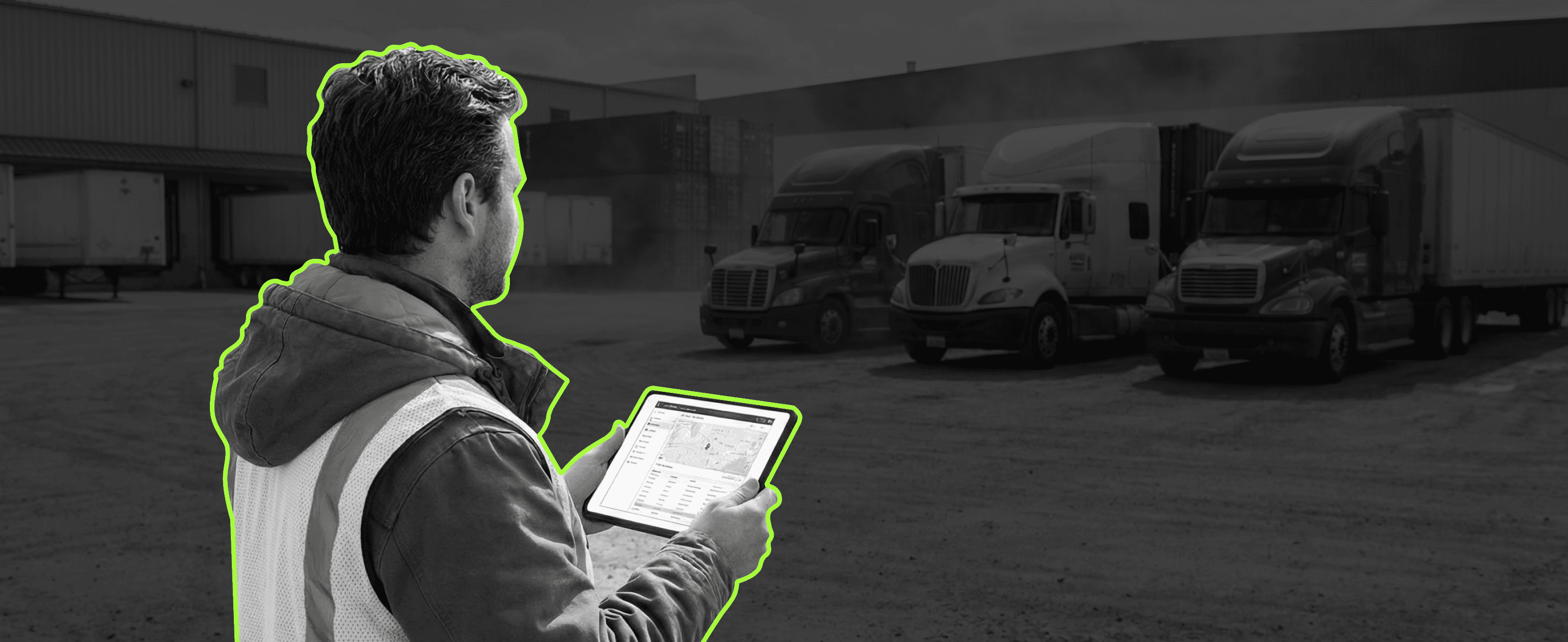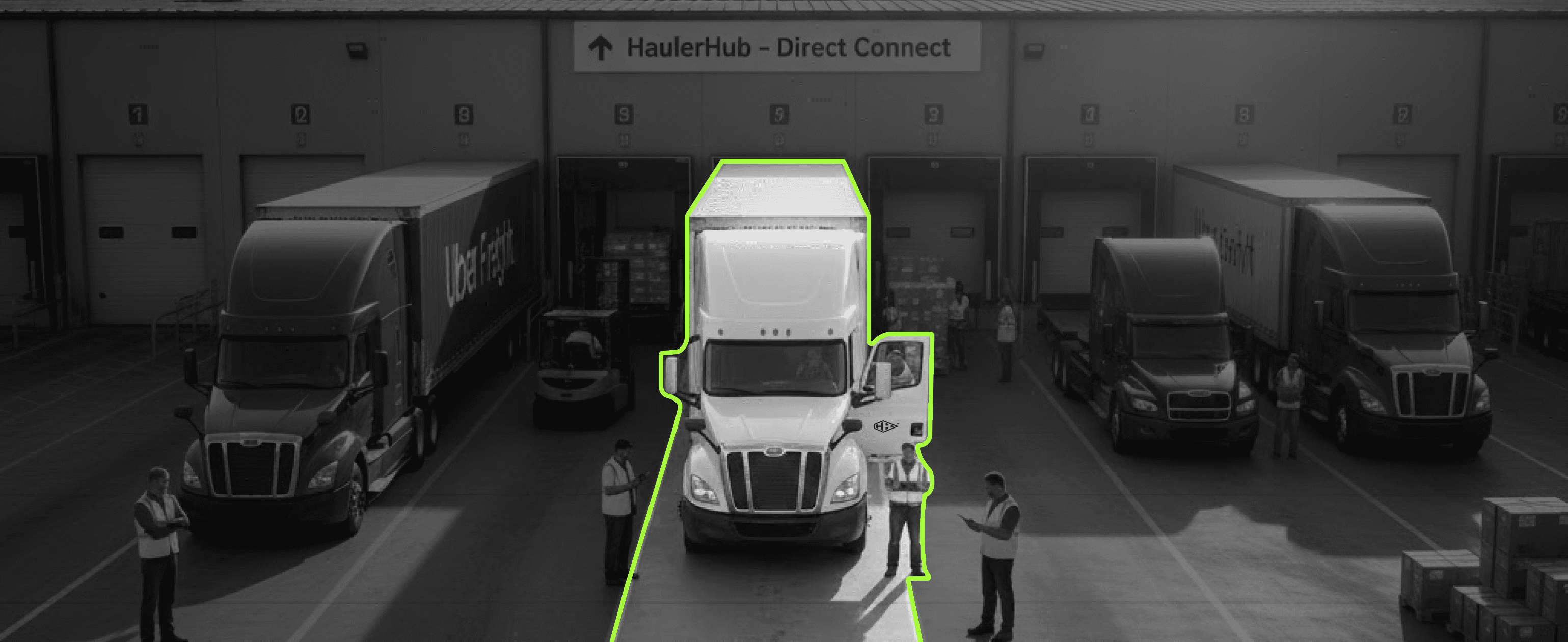Jul 30, 2025
Scroll to explore
Every day, logistics managers lose sleep over freight fraud that costs the industry between $500 million and $700 million annually—much of it preventable with the right technology. Traditional paper-based bill of lading processes expose your freight to document manipulation and costly delays that damage your bottom line.
HaulerHub's Smart BOL technology cuts processing times by 70% while eliminating fraud vulnerabilities. Transform paper document bottlenecks into streamlined digital workflows that put you back in the driver's seat of your shipping and logistics operation. Ready to revolutionize your freight documentation?
Understanding Electronic Bill of Lading Systems in Modern Supply Chain Operations
The logistics industry demands modern solutions. Here's how adopting electronic bill of lading technology revolutionizes freight management and protects your operations from the vulnerabilities that plague traditional paper-based systems.
What Are Digital Bills of Lading and Why They Matter for Freight Management
Key Functions of Digital BOLs:
Receipt for shipped goods - Tamper-proof confirmation eliminating the need for paper
Evidence of the contract - Cryptographically secured agreement between shipper and carrier
Document of title - Secure ownership transfer for the receiver of the goods
Real-time tracking - Instant visibility for all stakeholders involved
Critical Benefits for the Shipping Industry:
85% reduction in human error from manual data entry
Real-time document sharing between carriers, shippers, and consignees
Instant fraud detection through built-in authentication and access controls
Streamlined billing process with automated invoice generation
The use of electronic documents in global trade eliminates dependency on physical shipping documents while providing the same legal validity as traditional bill of lading formats.
Types of Bills of Lading: From Paper BOLs to Smart Digital eBOL Systems
Traditional Paper BOLs | Smart Digital eBOL Systems |
Manual signature verification | Cryptographic authentication |
Physical document storage | Cloud-based secure access |
High fraud vulnerability | Built-in fraud prevention |
Processing delays | Real-time processing |
📋 Key Takeaways - Understanding eBOL Systems: ✅ Adopting electronic bill of lading technology reduces processing errors by 85% ✅ Digital signatures and authentication prevent document fraud and manipulation
✅ EBL platforms eliminate courier delays and physical document storage costs ✅ Standardization of electronic documentation improves global trade efficiency
The Hidden Costs of Traditional Paper-Based BOL Processes
Manual processes drain profits and create vulnerabilities. Here's what traditional paper bill of lading workflows are really costing your operation and why the shipping industry needs immediate change.
Fraud Vulnerabilities and Financial Impact in Container Shipping
Common Fraud Methods Targeting Paper Document Systems:
Document counterfeiting - Sophisticated forgeries targeting original bills of lading
Unauthorized modifications - Altered quantities, destinations, and digital signatures
Identity theft - Stolen credentials used for cargo redirection and false invoices
Double financing - Same BOL used for multiple loan applications in global trade
Real-World Impact on Shipping Companies:
Based on FreightWaves reporting on industry fraud, schemes like double brokering and cargo theft cost the industry between $500-$700 million annually, with individual cases reaching staggering amounts:
Cargo theft increased 49% in the first half of 2024 vs. 2023
Double-brokering complaints rose 400% since 2022
Individual fraud schemes can reach $5+ million per incident
Recovery costs often exceed the value of stolen cargo
Hidden Processing Costs of Traditional Paper-Based Systems: McKinsey analysis indicates that bill of lading processing accounts for 10-30% of total trade documentation costs, with additional impacts including:
Documentation for single shipments requires up to 50 sheets of paper
Up to 30 different stakeholders involved in paper-based processes
Extended processing times due to courier dependency and physical document handling
COVID-related delays caused thousands of containers to linger in ports due to missing documents
The landscape of international trade demands that relevant parties move away from traditional paper bill of lading systems that create these expensive vulnerabilities.
📋 Key Takeaways - Hidden Costs: ✅ Manual BOL fraud costs companies $2.85M-$6.8M annually ✅ Paper systems require 40% more processing overhead than digital ✅ Fraud detection delays create massive vulnerability windows
Smart BOL Technology: HaulerHub's Solution to Digitize Your Lading System

Technology meets logistics. Your success is our mission. Our eBOL platform puts you in the driver's seat with advanced security features and intuitive design that transforms how shipping companies manage electronic trade documentation.
Advanced Features of Our Digital Bill of Lading System
Core eBL Platform Capabilities:
Real-time document verification with blockchain authentication for contract of carriage
Automated compliance checking against regulatory requirements governing the use of electronic documents
Instant stakeholder notifications via SMS, email, and app alerts to all parties involved
Seamless API connectivity with existing ERP and warehouse management system platforms
Intelligent invoice automation linked to completed shipment of goods transactions
HaulerHub's Bill of Lading System Advantages:
Universal carrier compatibility across major shipping and logistics networks
Cloud-based accessibility from any device, enabling remote access controls
Predictive analytics for route optimization and cost reduction in global trade
Custom electronic signature workflows tailored to your shipping process requirements
Our digital bill of lading system facilitates acceptance and adoption of standards-based electronic bill of lading technology while maintaining the legal validity of traditional paper formats.
How Smart Electronic Bills of Lading Prevent Freight Document Fraud
Multi-Layer Security for Modern Container Shipping:
Security Layer | Protection Method | Result |
Authentication | Biometric + token verification | Prevents identity theft |
Encryption | 256-bit cryptographic protection | Blocks document tampering |
AI Monitoring | Pattern recognition alerts | Detects suspicious activity |
Real-Time Protection Capabilities:
Intelligent pattern recognition identifies anomalous behavior across the bill of lading process
Credential verification against known fraud databases in the shipping industry
Cross-reference checking validates shipment details and electronic documentation
Instant alert system notifies administrators of threats to shipping documents
HaulerHub's Fraud Prevention Advantage: Our lading software incorporates advanced AI that learns from global trade patterns, making our eBOLs virtually immune to the fraud methods that cost shipping companies billions annually.
Streamlined Operations: From Traditional Paper to Digital Workflow
Processing Time Revolution:
Process | Traditional Paper | Digital eBOL | Improvement |
Document creation | 30-45 minutes | 2-3 minutes | 90% faster |
Distribution to consignee | 2-5 days | Instant | 100% faster |
Electronic signature collection | 3-7 days | 10-30 minutes | 99% faster |
Operational Benefits Using an Electronic System:
70% faster processing times from creation to completion
95% error reduction through automated validation and digital workflows
100% real-time visibility for all stakeholders involved in the shipping process
Seamless billing process integration with existing financial systems
The future of container shipping depends on adopting electronic solutions that eliminate manual data entry while maintaining the legal authority of traditional paper documentation.
📋 Key Takeaways - Smart BOL Technology: ✅ HaulerHub reduces processing time by 70% vs. manual systems ✅ Multi-layer security prevents fraud before it occurs ✅ Real-time visibility gives logistics managers complete control
Implementation Guide: Deploy Electronic Bill of Lading Systems
Success requires smart execution. Follow this proven approach to implement eBOL systems that deliver maximum benefits.
Phase 1: Assessment and Planning
Current State Analysis:
Document workflow mapping - Chart existing BOL processes
System inventory - Catalog current technology platforms
Pain point documentation - Identify specific problems to solve
Planning Deliverables:
Implementation timeline with realistic milestones
Success metrics for measuring effectiveness
Phase 2: Integration and Testing
Technical Integration:
System Type | Timeline | Method |
ERP Systems | 2-4 weeks | REST API connection |
WMS Platforms | 1-3 weeks | Direct database sync |
Carrier Networks | 3-6 weeks | EDI/API hybrid |
Testing Strategy:
Pilot program with select shipments
Security testing validating fraud prevention
Performance testing under realistic conditions
Phase 3: Training and Rollout
Training by Role:
Logistics Managers - System overview, analytics (8 hours)
Operations Staff - Daily workflows, processing (6 hours)
Customer Service - Communication, troubleshooting (4 hours)
Rollout Phases:
Pilot - 10% of shipments (2-4 weeks)
Expanded - 50% of shipments (4-6 weeks)
Full - 100% of shipments (2-4 weeks)
📋 Key Takeaways - Implementation: ✅ Three-phase approach minimizes risk and ensures success ✅ Proper planning prevents costly integration issues ✅ Gradual rollout allows optimization before full deployment
ROI and Business Impact
Quantify your investment return. McKinsey research provides compelling data on the financial benefits of electronic bill of lading implementation.
Cost Savings Analysis: The McKinsey Advantage
McKinsey Research Findings: McKinsey estimates that if electronic bill of lading gains 100% adoption across the industry, it could unlock around $18 billion in gains for the trade ecosystem through faster document handling and reduced human error, plus $30-40 billion in global trade growth as digitalization reduces trade friction.
Direct Industry Benefits:
Main container shipping lines could save up to $6.5 billion annually with full eBOL adoption
Bill of lading processing accounts for 10-30% of total trade documentation costs
Up to 50 sheets of paper eliminated per shipment with digital transformation
$25 trillion global cargo trade operates with 4 billion paper documents in circulation
Operational Efficiency Gains
Processing Time Revolution:
Instant document distribution vs. days for paper courier delivery
Real-time stakeholder coordination across up to 30 different parties
Automated compliance checking preventing costly documentation errors
Reduced port congestion from faster document processing
HaulerHub Cost Advantage:
10% platform fee vs. 25-30% traditional 3PL costs
No setup costs for standard integrations
24/7 customer support throughout implementation
Industry-leading security preventing fraud losses
The data is clear: adopting electronic bill of lading technology delivers measurable ROI while positioning your operation for future growth in an increasingly digital global trade landscape.
📋 Key Takeaways - ROI Impact: ✅ Electronic BOL systems deliver $210,000+ annual savings ✅ Processing improvements of 70%+ increase efficiency ✅ Payback achieved within 4-6 months
Security Best Practices for Fraud Prevention

Security isn't optional—it's essential. Robust protection ensures maximum fraud prevention while maintaining efficiency.
Authentication and Monitoring
Multi-Factor Authentication:
Password protection - Standard login security
Mobile tokens - 30-second verification codes
Biometric verification - Fingerprint/facial recognition
Real-Time Monitoring:
Fraud attempts detected in < 5 seconds
Unauthorized access alerts within 30 seconds
System anomalies notification in < 1 minute
Data Protection Standards
Encryption and Compliance:
AES-256 encryption for data at rest
TLS 1.3 protocols for data in transit
Automated compliance reports for regulatory requirements
Audit Capabilities:
Detailed investigation tools for security incidents
Chain of custody documentation for legal proceedings
Complete transaction history for compliance
📋 Key Takeaways - Security: ✅ Multi-factor authentication provides layered security ✅ Real-time monitoring enables rapid threat response ✅ Comprehensive audit trails support legal requirements
Transform Your Freight Documentation Today
Transforming Logistics, Empowering Movement.
HaulerHub's Smart BOL technology puts you in control, combining cutting-edge security with intuitive design that eliminates fraud vulnerabilities while streamlining your logistics operation.
Key Benefits Recap:
Eliminate fraud with multi-layer security
Cut processing costs by 70% through automation
Save $210,000+ annually vs. manual systems
Gain real-time control over every shipment
Ready to revolutionize your freight documentation?
Don't let manual processes hold your operation back. Contact HaulerHub today to discover how Smart BOL technology transforms your freight documentation while protecting your bottom line.
Technology meets logistics. Your success is our mission.
Checkout other blogs

Stay ahead of the supply chain.
Break free from costly and complex systems. Sign up with HaulerHub now and make shipping a breeze.




